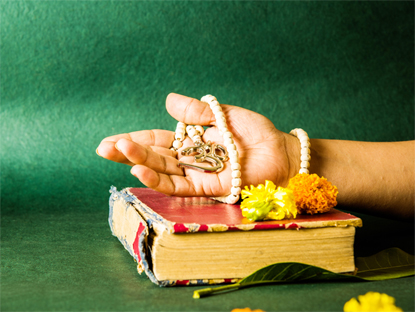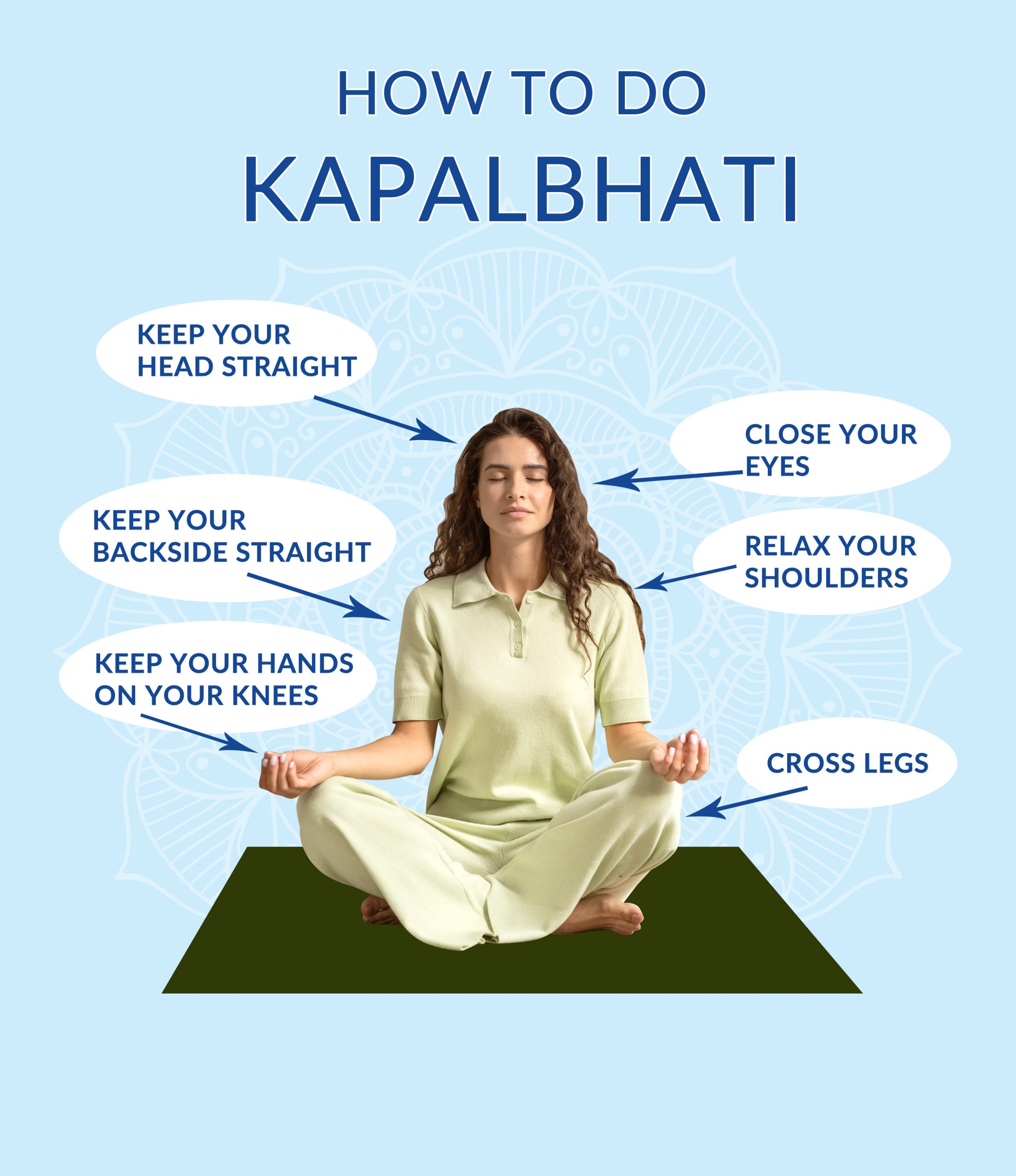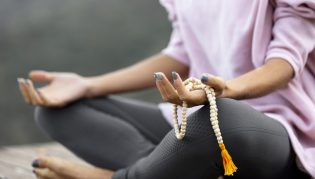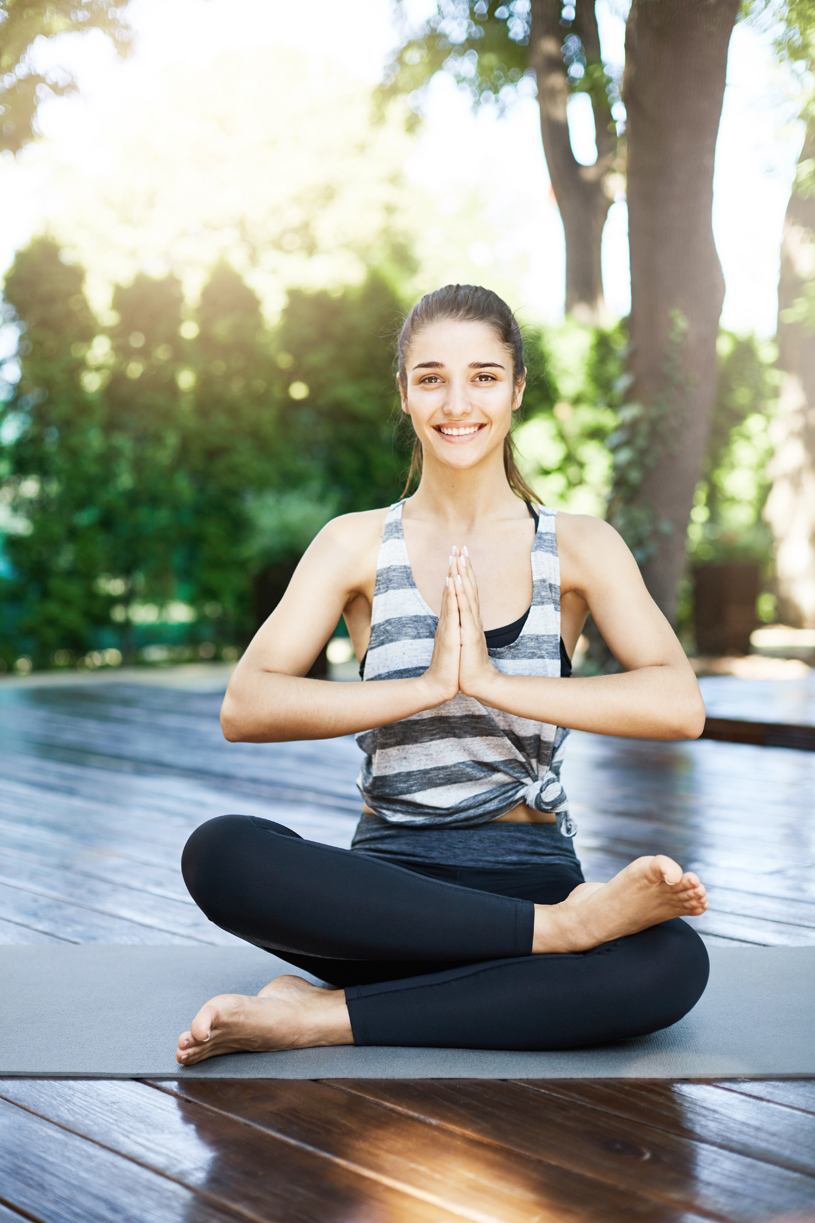Breathing Exercise from Ancient Hinduism: A Cure for Multiple Medical Issues
By Dr. Mohini Shinde

Disclaimer:
The information provided in this article is for educational purposes only and is not intended as medical advice. It is also not intended to be a substitute for professional medical advice, diagnosis, or treatment. Do not disregard professional medical advice or delay in seeking it because of something you have read in this magazine. Always seek the advice of your physician or other qualified health provider with any questions you may have regarding a medical condition. The publishers of this magazine do not endorse any specific treatments, medications, or procedures mentioned. The views expressed are those of the authors and do not necessarily reflect the official policy or position of the magazine.
Ancient Hindu practices, deeply embedded in the traditions of Yoga and Ayurveda, have been revered for centuries for their profound impact on health and well-being. Among these, Pranayama, or the practice of controlled breathing, stands out for its simplicity yet profound ability to influence physical, mental, and spiritual health. The term Pranayama itself is derived from Sanskrit, where “Prana” means life energy and “Ayama” refers to control or extension, highlighting the essence of this practice as a means to control the life force within.
Historical and Cultural Context
The origins of Pranayama can be traced back to ancient Hindu scriptures, including the Vedas and Upanishads, which detail various techniques and their intended spiritual and health benefits. These texts describe Pranayama not just as a practice for physical vitality but as a discipline leading to spiritual enlightenment. Over millennia, these breathing techniques have been refined and integrated into Yoga practices, becoming essential elements of various forms of Yoga, such as Hatha Yoga and Ashtanga Yoga.
Scientific Basis and Health Benefits
Modern scientific research has begun to uncover the physiological mechanisms behind the benefits of Pranayama, lending credibility to ancient claims and encouraging a broader acceptance of these practices in holistic and even conventional medical treatments. Here are some detailed insights into the health benefits of Pranayama:
Stress Reduction: Stress is a common ailment in today’s fast-paced world, leading to a host of psychological and physiological issues. Pranayama techniques like Ujjayi breathing create a rhythmic sound and sensation, focusing the mind and calming the nervous system. This reduction in stress is not merely subjective; studies have shown measurable decreases in cortisol levels, the body’s primary stress hormone, following regular Pranayama practice.
 Respiratory Health: Pranayama’s impact on respiratory health is profound. Techniques such as Kapalabhati (Skull Shining Breath) involve rapid, forceful exhalations that help clear the nasal passages and lungs, improving oxygen capacity and efficiency. Clinical studies have documented improvements in asthmatic conditions and overall lung function, attributing these benefits to the strengthening of respiratory muscles and enhanced oxygenation of the blood.
Respiratory Health: Pranayama’s impact on respiratory health is profound. Techniques such as Kapalabhati (Skull Shining Breath) involve rapid, forceful exhalations that help clear the nasal passages and lungs, improving oxygen capacity and efficiency. Clinical studies have documented improvements in asthmatic conditions and overall lung function, attributing these benefits to the strengthening of respiratory muscles and enhanced oxygenation of the blood.
Cardiovascular Benefits: The gentle, controlled breathing involved in Pranayama has been shown to lower blood pressure and improve heart rate variability, an indicator of cardiovascular health and stress resilience. These effects are believed to stem from Pranayama’s ability to balance the autonomic nervous system, enhancing parasympathetic (relaxation) activity while reducing sympathetic (stress) responses.
Digestive Function: The stress-reduction and energy-balancing effects of Pranayama also extend to the digestive system. Techniques that involve abdominal contraction and relaxation, such as Agnisar Kriya, stimulate digestive organs, aiding in the management of digestive disorders like IBS. The overall calming effect of Pranayama can also mitigate stress-related digestive issues by improving the gut-brain axis.
Mental Health: Beyond its physical health benefits, Pranayama is a powerful tool for mental health. Practices such as Anulom Vilom (Alternate Nostril Breathing) are associated with enhanced mental clarity, reduced symptoms of depression and anxiety, and improved cognitive functions. These benefits are attributed to increased blood flow to the brain, reduced stress levels, and the meditative state Pranayama induces.
Sleep Quality: Insomnia and sleep disturbances are common issues that negatively affect overall health. Pranayama techniques like Bhramari (Bee Breath), characterized by the production of a soothing humming sound during exhalation, can induce a state of deep relaxation conducive to sleep. Regular practice has been linked to improved sleep patterns and quality, providing a natural remedy for sleep-related issues.
Understanding the Basics of Pranayama

“Pranayama, a term derived from Sanskrit, plays a pivotal role in the practice of yoga, aligning with the eight limbs of yoga as presented by Patanjali. At its core, Pranayama comprises various breathing techniques designed to manipulate the breath in order to influence the flow of prana, or vital life energy, within the body.”
By engaging in practices such as deep breathing, alternate nostril breathing, and controlled breath retention, practitioners aim to harmonize their prana, thereby fostering both physical and spiritual health. This discipline not only aids in the regulation of the body’s energy flow but also serves as a foundation for achieving higher states of consciousness in yoga practice. The methodology behind Pranayama is intricate, encouraging a gradual progression in practice that allows individuals to deepen their understanding and control of breath, ultimately guiding them towards a balanced and energized state of being. Through consistent practice, individuals learn to master their breathing patterns, which is essential for advancing in their yoga practice and enhancing their overall wellness.
The Science Behind Breath Control

Recent scientific studies support the efficacy of Pranayama, highlighting its impact on the body’s nervous system. Engaging in Pranayama activates the parasympathetic nervous system, the segment responsible for relaxation and rejuvenation. This activation helps mitigate the body’s stress response, characterized by a decrease in heart rate and blood pressure, promoting a state of calmness. Likewise, deep breathing techniques enhance oxygenation of the blood, facilitating better nutrient and oxygen delivery to cells throughout the body. Improved oxygenation is crucial for optimal metabolic processes and can lead to increased vitality and energy.
Additionally, the practice of controlled breathing has been linked to enhancements in pulmonary function, aiding in more efficient gas exchange in the lungs. This is particularly beneficial for individuals with respiratory conditions, as it may improve lung capacity and breathing efficiency. Furthermore, the rhythmic nature of Pranayama exercises can positively influence cardiovascular health by promoting more uniform blood flow and reducing the risk of hypertension. Through these mechanisms, Pranayama exemplifies a profound connection between mindful breathing practices and physiological well-being, underpinning the ancient wisdom of breath control with contemporary scientific validation.
Breathing Exercises and Their Health Benefits

The traditional practices of Pranayama, deeply rooted in ancient Hinduism, extend an array of health advantages, targeting both physical and psychological aspects. Engaging in these breathing exercises can substantially mitigate symptoms and improve conditions such as asthma and chronic obstructive pulmonary disease (COPD), offering a natural approach to enhancing respiratory health. Individuals battling anxiety, depression, or facing challenges with sleep, such as insomnia, also find solace through the regular practice of these exercises. Pranayama’s deep and controlled breathing techniques facilitate a profound connection between the mind and body, fostering an environment conducive to healing and well-being. By increasing lung capacity and strengthening the respiratory system, these exercises ensure a more efficient oxygen and nutrient supply to the body, vital for cellular health and energy. For those seeking relief from stress and mental fatigue, the calming effect of Pranayama exercises can be particularly beneficial, promoting relaxation and aiding in stress management. Through consistent practice, practitioners can achieve a better balance in their physical and emotional states, opening the door to enhanced quality of life and well-being. As these ancient techniques continue to gain recognition for their health benefits, they underscore the timeless relevance of Pranayama in today’s fast-paced world, providing a holistic approach to managing health and fostering resilience against a spectrum of medical issues.
Incorporating Pranayama into Your Daily Routine
“Embracing the ancient practice of Pranayama in your everyday life can be both enriching and transformative. It doesn’t require extensive time commitments or special equipment, making it accessible for everyone, regardless of their schedule or lifestyle. “
To get started, you might consider beginning with the simple yet profound technique of deep diaphragmatic breathing. This involves consciously engaging the diaphragm during inhalation to fill the lungs completely, followed by a slow, controlled exhalation. This can be done anywhere, anytime, whether you’re seated at your desk, waiting in traffic, or preparing for sleep.

Another foundational technique to explore is Nadi Shodhana, or alternate nostril breathing, which is known for its calming and balancing effects on the mind and body. This involves gently closing one nostril while breathing in through the other, then alternating nostrils with each breath. It’s a practice that can serve as a mental reset, helping to clear the mind and soothe the nervous system.
For those looking to integrate Pranayama into their routine, it’s advisable to start with just a few minutes each day, gradually increasing the duration as comfort and capacity grow. Morning times are often preferred for practice to help set a positive tone for the day ahead, though any time that fits your schedule can be beneficial. The key is consistency and mindfulness, allowing the practice to naturally evolve and deepen over time.
Embracing Ancient Wisdom for Modern Health

The timeless teachings of Pranayama, deeply rooted in the ancient wisdom of Hinduism, present a holistic approach to health that transcends the centuries, proving to be as effective today as it was thousands of years ago. The integration of these breathing exercises into daily life has the potential to unlock a myriad of health benefits that cater to both the body and mind. As individuals from diverse backgrounds and professions have attested, the disciplined practice of Pranayama can lead to remarkable improvements in physical vitality, mental clarity, and emotional stability. The simplicity of its techniques, combined with their profound impact on overall well-being, makes Pranayama a uniquely accessible and powerful tool in the pursuit of health and harmony. In embracing this ancient practice, we not only pay homage to the rich heritage from which it originates, but also take a proactive step toward enhancing our modern lives. With each breath taken in mindfulness and intention, we tap into a wellspring of healing and rejuvenation that is both ancient and ever-new. Thus, in the journey towards optimal health and wellness, Pranayama stands out as a beacon of light, guiding us back to the fundamentals of breath and life energy and offering a pathway to holistic well-being in our contemporary world.
About the Author
Dr. Mohini Shinde is a professor of religions of India and has taught Hindu religion and world religion in several US universities before her retirement. Her research was on religion and politics in South Asia. In her research engagements, she lived several years in India where she studied vedas and upanishads. She lives in California with her husband.























